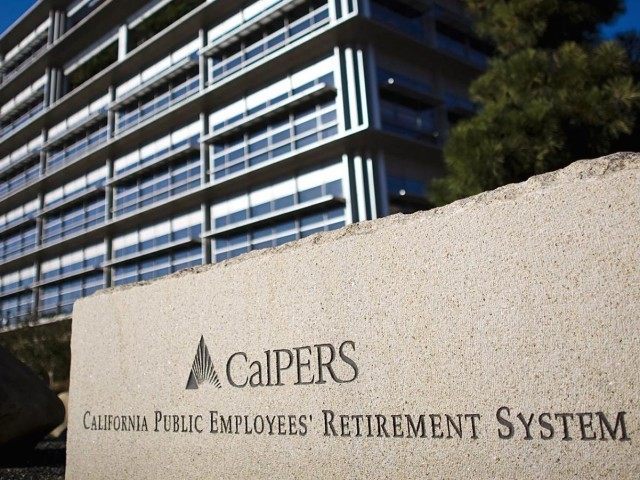The California Public Employee Retirement System (CalPERS) has announced that its solvency has improved and that it is only $89.7 billion underfunded. Unfortunately, CalPERS’s purported solvency of percentage of 77% assumes the fantasy that it can conservatively compound its annual earnings at 7.5% without any losses. But if CalPERS only earns 4.5% a year–a rate conservative private pensions often shoot for–the fund’s long-term liability is a staggering $290 billion.
CalPERS’s annual statement is all rainbows, butterflies and unicorns (RBU). Spokesman Brad Pacheco told the Sacramento Bee that CalPERS earned 18.4% in the latest fiscal year, well above its official forecast of 7.5%.
When asked about the improvement in recent funding levels, he said, “it’s safe to say it’s the investments.” Pacheco’s statement of confidence about the benefits of the stock market came just as the Dow Jones Industrial Index of stock’s has fallen 3%, or almost 550 points, in the last four days.
Despite CalPERS’s recent performance statement, the fund has never recovered from the disastrous investment losses suffered during the 2008 market crash. Its most recent rate hike from $3.8 billion to $5 billion, approved by its governing board last April, is only designed to compensate for longer life expectancies for retirees.
In 2012, the California Legislature did pass modest pension reforms, but they mostly apply to new workers hired since 2013. Those reforms only cut the state’s long-term pension debt by 10%, according to the City Journal.
Despite three California municipalities—Vallejo, Stockton, and San Bernardino—filing Chapter 9 bankruptcies in the last five years due to retirement costs, no California city or county entity has restructured the pension benefit offered to employees.
When Stockton filed for bankruptcy, it listed $29 million in payments to CalPERS and $7 million to repay previous pension borrowings. Together, CalPERS accounted for 21% of the city’s total general-fund spending of $168 million in 2011. City officials told the court that the problem was “uncontrolled pension, health, and other benefit cost increases.”
Vallejo, which has emerged from bankruptcy, did nothing to reduce its pension costs during its bankruptcy. The cost of employing a cop in Vallejo is still $230,000 a year, including $47,000 in annual CalPERS contributions.
According to my calculations, if CalPERS used a conservative expectation of a 4.5% annual investment return, the State of California pension funding would fall below 50% and the annual contribution would have to jump by $10 billion.
As I reported in ‘Cal Lawmaker Proposes Taxing Services to Pay Pensions’, $10 billion is exactly the amount of annual taxes that newly elected State Senator Bob Hertzberg (D-Sacramento) just proposed raising by extending California’s sky-high sales tax rates to all professional, construction, financial and agricultural services for the first time.
Even if the Legislature raised the annual contribution to $15 billion, it would take 30 years for CalPERS to become fully funded. But if CalPERS ever did become highly funded, why wouldn’t the state’s powerful public employee unions go RBU and use their political muscle to advocate for even higher pension and healthcare benefits?
If you are interested in California’s wacky government, please click on Healthcare for Illegals Pushes California’s Budget to $5.8 Billion over Inflation

COMMENTS
Please let us know if you're having issues with commenting.